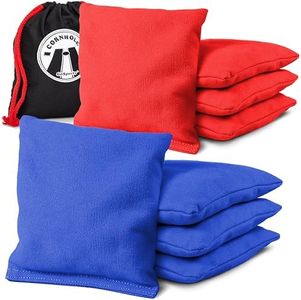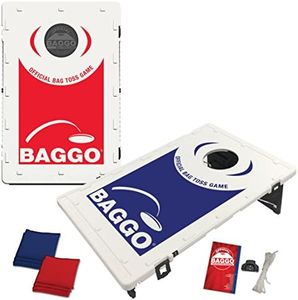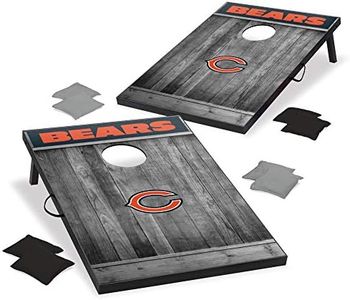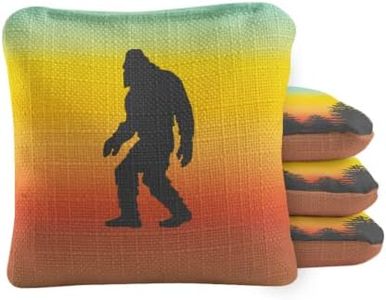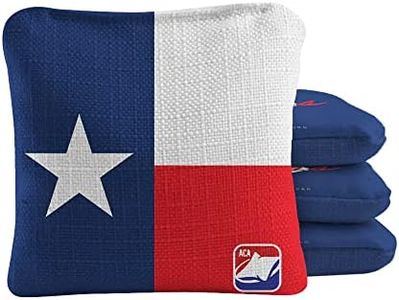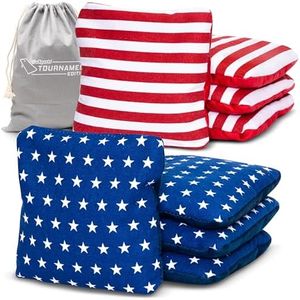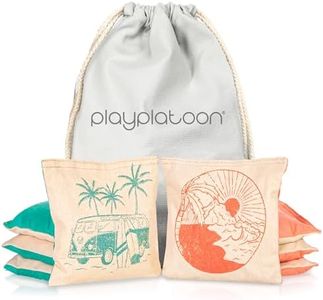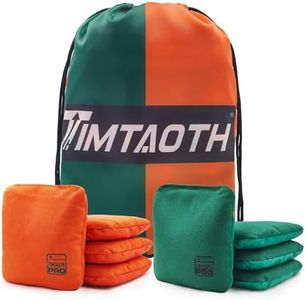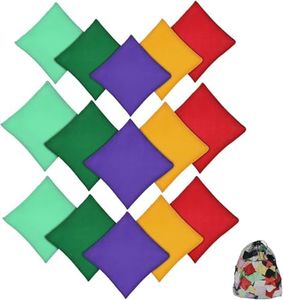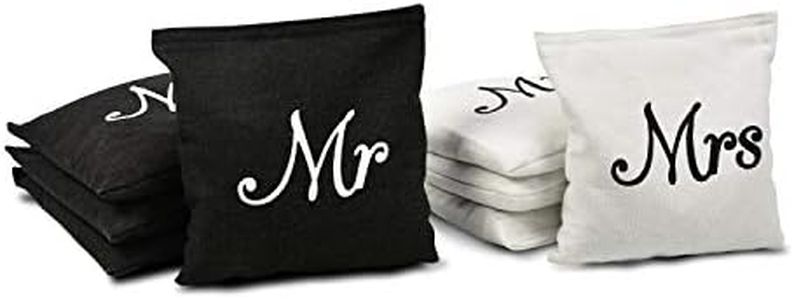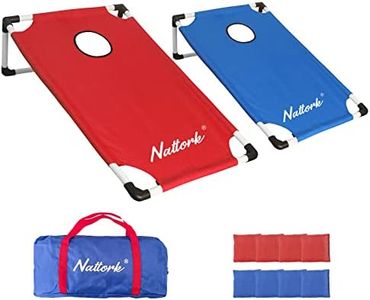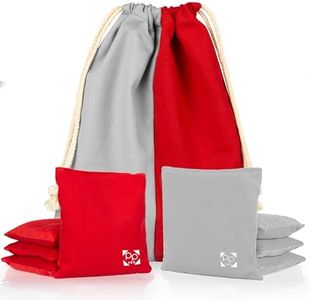We Use CookiesWe use cookies to enhance the security, performance,
functionality and for analytical and promotional activities. By continuing to browse this site you
are agreeing to our privacy policy
10 Best Cornhole Bags
From leading brands and best sellers available on the web.Buying Guide for the Best Cornhole Bags
Choosing the right cornhole bags can make a big difference in your playing experience, whether you're playing for fun with friends or participating in a more serious competition. The best bags for you will depend on how you plan to use them, where you'll be playing, and what feels comfortable in your hands. Paying attention to the different specs of cornhole bags will help you find a set that matches your style and environment.MaterialCornhole bags are usually made from either traditional duck cloth or various synthetic fabrics. The material determines how durable the bag is and how it feels when you grip and throw it. Duck cloth tends to be sturdy and provides a classic grip, while synthetic materials can offer better weather resistance and allow for unique playing characteristics like a slick or sticky side. People playing indoors or where weather isn’t a concern often like the feel of duck cloth, but outdoor or all-weather players might benefit from synthetic fabrics. Try to choose a material that fits where and how you’ll mostly play.
Fill TypeThe inside of cornhole bags can be filled with either corn kernels or synthetic beads. Corn-filled bags give a traditional feel and break in over time, becoming softer, but they can attract pests or get ruined if wet. Synthetic-filled bags are more consistent in weight and resilient to weather, making them more versatile for all play environments. If you like a nostalgic, changing texture with use, corn fill might suit you. If you want longevity and low maintenance, synthetic fill is usually the way to go.
WeightMost official cornhole bags are standardized at about 16 ounces, but some lighter or heavier options exist for casual play. The weight of the bag affects how it flies and lands on the board. Lighter bags may be easier for kids or those with less arm strength to throw, while heavier bags can cut through wind better and tend to stay on the board more reliably. Choose a weight that feels comfortable for your throwing style and suits your playing conditions.
SizeCornhole bags are typically around 6 inches by 6 inches, especially for tournament play, but some recreational sets may have slightly smaller or larger bags. The size affects grip and ease of throw. For people with smaller hands or younger players, a slightly smaller bag might be easier to control, while regulation-sized bags are best for those wanting to practice for organized competition.
Grip and FeelSome cornhole bags feature special stitching or fabrics that affect how easy they are to grip and how they move on the board. Bags with a smoother or slick side can slide further on the board, while those with a tackier side can stop quickly. If you like to aim for complicated shots (like blocking or sliding), you might appreciate a bag that gives you more friction or grip options. Think about your throwing style and what kind of shots you prefer when considering this feature.
Weather ResistanceIf you plan to play outside frequently, especially in damp or variable weather, weather-resistant bags are important. These are designed to resist moisture and prevent mold or damage from rain and humidity. This feature matters less for indoor play but can significantly increase the lifespan of your bags if you often play outdoors.
